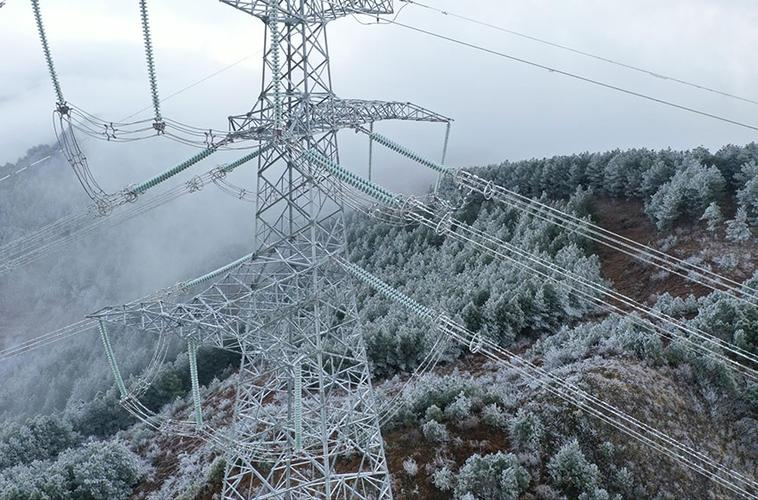Ice accumulation on transmission lines is one of the critical issues affecting the safe operation of power grids. Major accidents caused by ice buildup—such as conductor vibration, tower collapse, wire breakage, and insulator flashover—severely threaten the stability and safety of power systems. While transmission line icing monitoring principles and devices have been preliminarily standardized by power enterprises, numerous challenges persist. These include insufficient research on icing computational models, the lack of scientific utilization of massive online monitoring data for real-time icing condition assessment, and the absence of short-term icing trend prediction capabilities. Therefore, Dingxin Smart Technology's research on ice accumulation computational models, condition assessment, and predictive early warning for transmission line online monitoring holds significant scientific importance and represents a key technology in transmission line online monitoring applications.
The Transmission Line Simulated Conductor Icing Monitoring Device is a new visual icing monitoring and early warning system developed to address the challenges of installing and maintaining traditional equivalent icing thickness monitoring systems on transmission lines, which often suffer from inconvenient installation, difficult maintenance, and inaccurate data. This device features simple installation: there is no need to mount tension sensors at the connection points between insulators and towers. Instead, a section of conductor wire matching the actual transmission line's model and material is cut. Two low-range tension sensors measure the weight of ice accumulation on this conductor segment. Through mathematical modeling, this weight is converted into ice thickness. Simultaneously, a camera captures image and video data, while meteorological data (including wind speed, wind direction, temperature, humidity, barometric pressure, and rainfall) are uploaded to the monitoring backend. By simulating actual conductors, the system offers easy installation, low deployment costs, and accurate data. This facilitates multi-point monitoring along transmission lines, enhancing its effectiveness for ice monitoring and early warning.
The following regions in China are prone to ice accumulation on transmission lines:
Southwest Region: Includes Guizhou, eastern Yunnan, areas surrounding the Sichuan Basin, and parts of the plateau. Guizhou's rugged terrain, combined with the combined influence of cold air masses and warm, moist air currents during winter, along with high humidity and suitable wind speeds, frequently leads to power line icing. Eastern Yunnan also experiences icing when cold air masses move southward and interact with local warm, moist air currents. The surrounding mountainous and plateau regions of the Sichuan Basin, characterized by higher elevations and lower temperatures, experience ice formation as water vapor encounters cold surfaces and undergoes deposition.
Parts of Central and Eastern China:In provinces such as Hunan, Hubei, Jiangxi, and Anhui, winter conditions involving cold air masses from the north combined with abundant moisture create favorable conditions for ice accumulation on power transmission lines under low temperatures, high humidity, and certain wind speeds. For instance, Hunan, situated in the middle reaches of the Yangtze River along the path of southward-moving cold air masses, features a mountainous terrain with complex topography, further increasing the likelihood of ice buildup.
Northeast Region: Heilongjiang, Jilin, and northern Liaoning experience long, cold winters with heavy snowfall. Although the air is dry, power transmission lines may still develop ice buildup when exposed to moist air currents at low temperatures. This phenomenon is particularly severe in mountainous and high-altitude areas.
Certain areas in Northwest China:Regions such as the Qinling Mountains in Shaanxi, southeastern Gansu, and eastern Qinghai. These areas feature higher elevations and are significantly affected by cold air masses during winter, where moisture readily freezes into ice on power transmission lines under low-temperature conditions.





